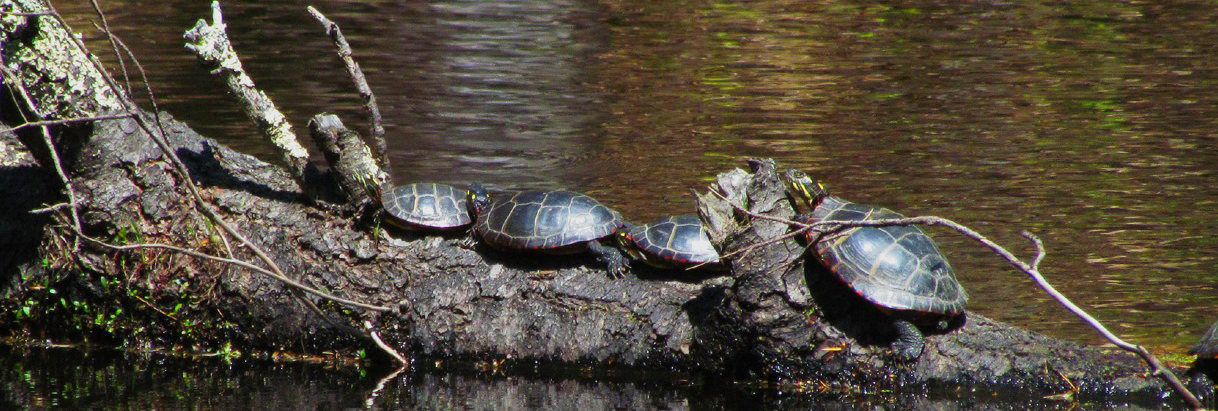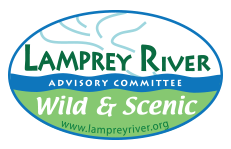B: VIEWING THE FILM: RIVER STORY
Overview:
The film should move students from their initial familiarity and questions about the river to a deeper exploration of the social and natural history of the river. As the film makes clear, the Lamprey travels "through our backyards and through our history." By studying the microcosm of the river's history in our community, students are studying the larger sweep of history on the American continent. (See Lesson 2 of the elementary portion of the curriculum.)
Learning Objectives:
Students will
- view the film and take notes on uses of the Lamprey River;
- construct historical periods based on the river uses they noted;
- enter their notes on a chart of historical periods;
- analyze reasons for changing patterns of use;
- compare Lamprey River history with patterns in American history.
Materials:
- video: River Story: The Lamprey Through History (18 mins.)
- TV and DVD player or www.lampreyriver.org
Part 1: http://www.youtube.com/watch?v=tQydbiIDryA
Part 2: http://youtu.be/MALMBfnmntk
Part 3: http://youtu.be/YU2Vovq84wU
- student journals
Procedure:
Pre-viewing:
Ask students to brainstorm (individually in journals then sharing, or listing on the board as a group) ways that humans have used rivers for travel, communication, and survival. Discuss briefly how have these uses changed over time.
Viewing and Note-taking:
The film includes a short description of the river's wildlife in the opening section on Native Americans. It then describes the social history of the river town-by-town, downstream from its wild headwaters in Northwood to its highest industrial development at the mouth in Newmarket. The film makes history personal by focusing on specific local families and their sawmills, grist mills, tanneries, guest houses, scout camps, and textile mills.
As they watch the film, have students take notes on specific uses of the river and when these occurred. View the film once without stopping but tell students they will have a chance to view it again. On the second viewing, you can stop the film to give students time to take notes. Following the film, the class will describe and identify periods of history, based on the patterns of use they have noted. The film ends by stating that the river's “future is truly in our hands." Lessons on decision-making affecting the health of the river come at the end of the unit.
Post-viewing and Charting Change:
Review students' notes on uses of the river and organize them chronologically. What patterns emerge? Working in small groups, students can create charts with time periods across the top, and river uses down the left hand side. The groups can come up with the periods and uses themselves, or they can determine these headings as a class, then let the groups fill in the chart. Students might not yet have information for every space on the chart, but they can continue to add data as they learn more. A chart form might look like this: click here.
For example, for "Pre-contact Native Americans," "resources used" would include fish, shellfish, mammals, trees, and stone. The"products made" would include clothing, shelter, hand tools, and canoes. The "sources of energy" would be human (by hand) and fire. The "goods are transported" by the river on canoes and the "river is used" for survival (food and water) rather than recreation. For later time periods, transportation changed from canoe use to horse and wagon, gundalows and ships during settlement, trains in the 1800s, and cars, roads and recreational boating in the 1900s. These changes were made possible by changes in technology and energy from hand power, to wind, to steam engines, to electricity and gasoline engines.
Students can estimate the degree of change brought to the river by these man-made uses along a continuum, with 1 showing little change and 10 a high degree of change. While Native Americans’ use had little effect on the river, the activities of the 1800s made drastic changes in the river water and bottom, and laws and technologies of the mid to late 1900's began to reverse the effects of this pollution.
Discussion:
Many topics for discussion are suggested by observing patterns of river use in the film. For example: How and why have the reasons for fishing and canoeing changed over time? Why do you think recreation and conservation are central to our view of the Lamprey now, but were not as much before 1900? How and why has the use of dams changed? How did the advent of electricity change our perception and use of the Lamprey? How has the Lamprey changed as a result of human impacts? Are these changes good or bad for the river? Do you think the health of the river improved or got worse from 1600-1900? From 1900 to the present? Why? What can we do about our negative impacts? How can we promote positive impacts? These are all questions that can be explored in subsequent projects and discussions.
Extension:
Historical activities along the river can be listed by location on an enlarged map of the river. They can also be listed on a chronological timeline which will make clear the progressive shifts from subsistence to light and large-scale industry, then to recreation and conservation.

